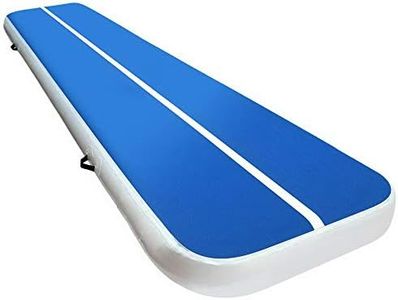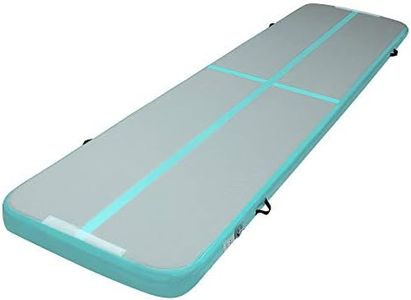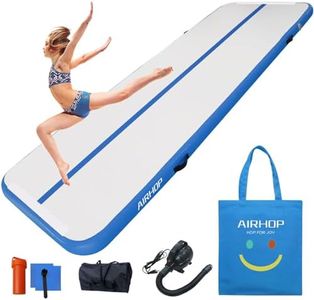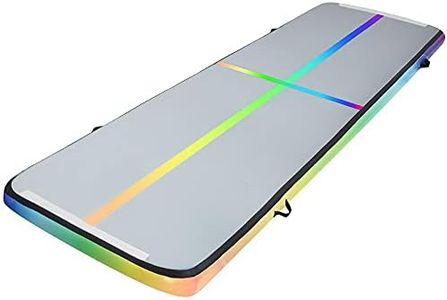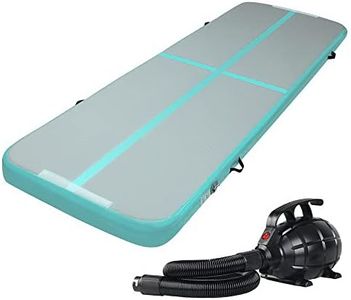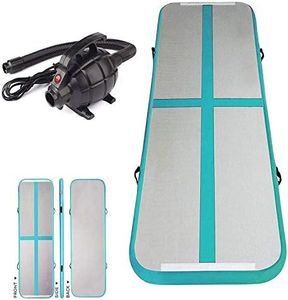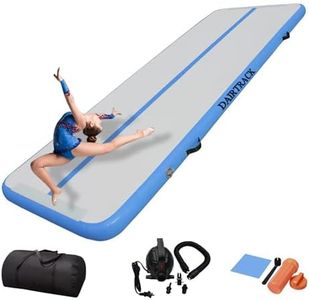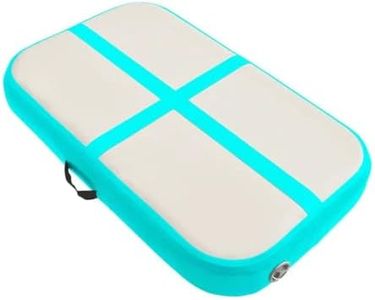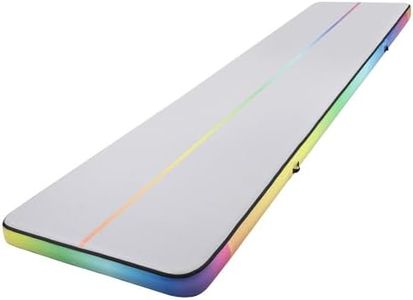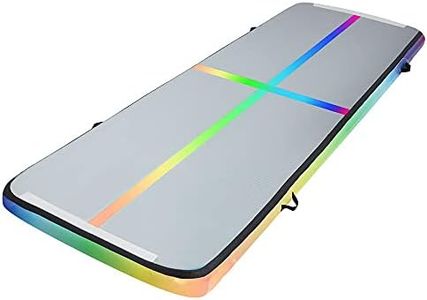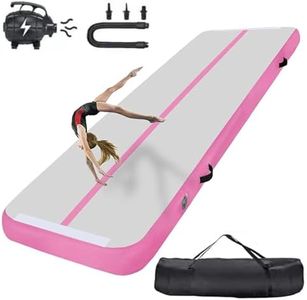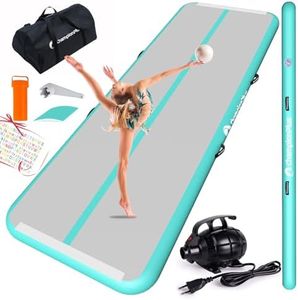We Use CookiesWe use cookies to enhance the security, performance,
functionality and for analytical and promotional activities. By continuing to browse this site you
are agreeing to our privacy policy
10 Best Air Track Mat
From leading brands and best sellers available on the web.Buying Guide for the Best Air Track Mat
Choosing the right air track mat is all about matching your activity level, available space, and performance needs to the features of the mat. Air track mats are widely used by gymnasts, cheerleaders, dancers, and fitness enthusiasts for practicing tumbling, flips, and other exercises safely at home or in a gym. A well-chosen mat provides the right balance of support and comfort, minimizing the risk of injury and making practice enjoyable. To make a smart choice, it’s important to understand the key features and how each affects your experience, so you end up with a mat that truly supports your goals.LengthThe length of an air track mat determines how much space you have for performing moves like cartwheels, flips, and handsprings. Shorter mats (3-4 meters) are suitable for small exercises and limited spaces, like bedrooms, while longer mats (5-8 meters) are better for advanced tumbling runs and team activities. Think about the moves you want to practice; beginners or those with tight spaces may opt for a shorter mat, while advanced users or those practicing continuous routines would benefit from a longer mat.
WidthThe width affects how much side-to-side room you have, which is important for safety and comfort. Narrow mats (about 1 meter wide) are sufficient for single users practicing straight-line moves. Wider mats (1.5 meters or more) give extra space for complex routines or group use, reducing the risk of rolling off the edge. Choose a width based on your movements and whether you'll be sharing the mat.
ThicknessThickness is crucial for impact absorption and comfort. Standard air tracks range from 10cm (4 inches) to 20cm (8 inches) thick. Thinner mats are firmer and better for general fitness, stretching, or young children. Thicker mats offer more cushioning for high-impact tumbles or gymnastics, protecting joints during jumps and landings. Decide on the thickness depending on your age, skill level, and the type of activity—thicker for intense gymnastics, thinner for basic practice or young kids.
Material QualityMaterial quality affects the durability and performance of the mat. Most air track mats are made from double-wall fabric (DWF) and tough PVC. High-quality materials resist punctures, tears, and stretching, allowing the mat to keep its shape over time. If you plan to use the mat regularly, especially outdoors or for group activities, prioritize durability. For occasional, gentle use, standard quality may suffice. Always check user reviews for long-term performance insights.
Inflation/Deflation SystemThis refers to how quickly and easily you can set up or put away your mat. Some mats come with high-speed electric pumps that inflate in minutes, while others may use slower manual pumps. Quick inflation and deflation can save time and make storage easier, especially if you move the mat between locations. If you value convenience or have limited setup time, choose a mat with an efficient pump system.
Portability & StoragePortability depends on the mat’s weight, carrying handles, and how small it packs down when deflated. If you’ll be taking your mat to different places, look for options designed to be lightweight and that include a carrying bag. For permanent setups, this is less important, but if you’ll be moving or storing the mat often, easy portability is a key feature.
Surface Grip/FinishThe mat’s surface should provide enough grip to prevent slipping but not be so rough as to cause skin burns. Mats with anti-slip finishes are safer for tumbling and dynamic movements. Consider the type of exercises you’ll do and whether you typically use the mat barefoot or with shoes. If you sweat a lot or practice energetic routines, prioritize a surface with good grip.
